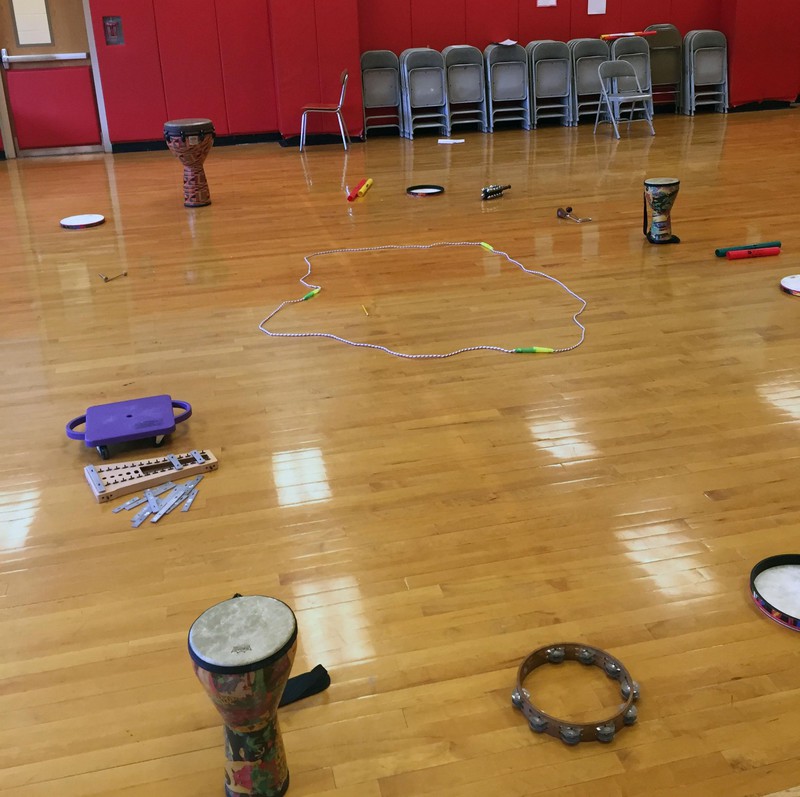
Teaching artist Patrick Polit (above) recently used musical instruments to deepen fifth graders’ understanding of cell structure and function. Collaborating with Grade 5 teachers in Patchogue-Medford school district, Mr. Polit, a trained musician, engaged students in a series of collaborative activities designed to take them on a musical journey of cells in both plants and animals.
For his residency, Mr. Polit asked the students: “How do individual parts of the cell act as a single unit?" To help the students answer this question, the teaching artist began each session by reviewing specific cell parts and function that were being taught in the classroom. For example, one lesson focused on the cell wall and membrane. Mr. Polit and the students discussed the shape of the cell wall and the difference between it and the membrane. Mr. Polit stimulated discussion with cell diagrams (below).

Next, Mr. Polit asked the students to move to the opposite of the room, where he had arranged instruments (below). The students were instructed to sit next to an instrument in preparation for a collaborative music activity. He related the instruments to the cell and its function.

For example, during one game, a student, representing a nutrient, circled and then entered the cell (below). Students were told to set a moderate beat at the beginning and then to accelerate the beat once the nutrient entered the cell. The repetition of notes on the xylophones and ribosomes then represented the forming of the protein. The students repeated this exercise several times. Each time, the students played a different role with a different instrument.

In addition to the hands-on activities, the students had an opportunity to see David Gonzalez (below) perform the ancient myth, Orpheus and Eurydice. Afterwards, Mr. Polit and the students discussed how Mr. Gonzalez had used music to convey the journey taken by the myth’s characters. The teaching artist compared the mythological journey with the students' musical journey through the cell.

In a later session, the teaching artist and students focused on the vacuoles, chloroplast, mitochondria and cell energy. The students explained that the chloroplast made food, the mitochondria made energy and the vacuoles stored energy and waste. After their discussion, Mr. Polit and the students moved to the circle of instruments at the opposite end of the room. One student was asked to act as the sun and produce energy by banging on a tambourine (below). As she did, students in the cell respond with their instruments, repeating the beat set by the sun. The beat triggered each part of the cell to perform its function. One student paid close attention to the sun’s beat and alerted his peers when they were offbeat. Again, all the students had a chance to play the different instruments. The playing of the various instruments simultaneously helped them to understand that the parts of cells function as a single unit.
